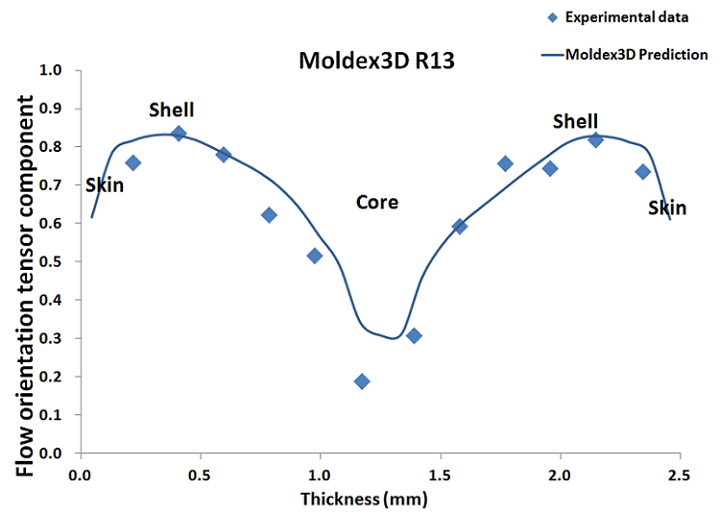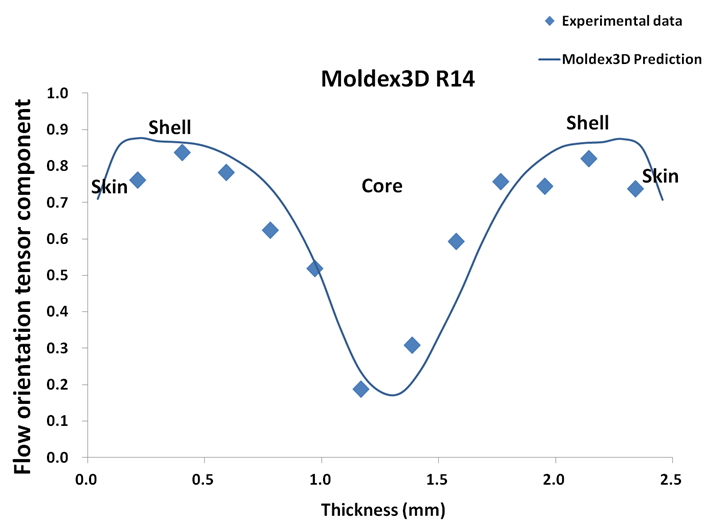According to a recent report published by the U.S. Department of Energy (DOE), since it is difficult to observe the micromechanical structures of complicated composites geometries through experiments, it is important to develop predictive engineering tools for injection molded carbon fiber thermoplastic composites as the automotive lightweight materials. Fiber Reinforced Plastics (FRP) compounds are now commercially available as candidate materials to improve the mechanical/structural performance and sustain both safety and durability requirements.
The anisotropic effect of fiber orientation on the mechanical properties of an FRP component has always been a concern in composite material science. Most anisotropic observations of fiber orientation distribution in injection-molded parts show the classical laminate structure: skin layer, shell zone and core region. Obtaining an accurate prediction on anisotropic long fiber orientation in injection molding has been challenging.
More recently, a relevant paper entitled “An Objective Tensor to Predict Anisotropic Fiber Orientation in Concentrated Suspensions” authored by Dr. Ivor Huan-Chang Tseng, Program Manager in the R&D Division of CoreTech System (Moldex3D) has been published. In this paper, Dr. Tseng investigates the objective issue of a new fiber orientation model, iARD-RPR with great efforts and proposes a new objective iARD tensor, which passes the classic rheological rule of Euclidean objectivity, namely, material frame indifference. An issue of objectivity arises when the non-objective tensor is used to describe the anisotropic fiber orientation behavior because different coordinate systems may yield different answers.
Previously, Moldex3D R13 has provided a good fiber orientation prediction, giving a high level of accuracy in predicting the fiber orientation in the skin and shell layer, whereas a significant deviation could somehow be found in the core region (Fig. 1). With the adoption of the advanced iARD-RPR scientific technology, Moldex3D’s latest R14 version can offer a reliable prediction on fiber orientation which captures a more precise skin-shell–core pattern (Fig. 2).
 Fig. 1 Fiber orientation distribution predicted by Moldex3D R13
Fig. 1 Fiber orientation distribution predicted by Moldex3D R13
 Fig. 2 Fiber orientation distribution predicted by Moldex3D R14
Fig. 2 Fiber orientation distribution predicted by Moldex3D R14
The true solid 3D simulation of injection molding software – Moldex3D, coupled with a state-of-the-art fiber orientation model: iARD-RPR – can truthfully capture the genuine spatial features of fiber orientation in complex 3D molded parts and provide accurate predictions. Thus, the most optimal parameters of the iARD-RPR fiber orientation model can be obtained to further apply in a real FRP production with complex geometries. Achieving an accurate 3D fiber orientation prediction is very helpful to assess the parts’ warpage and structural analysis.